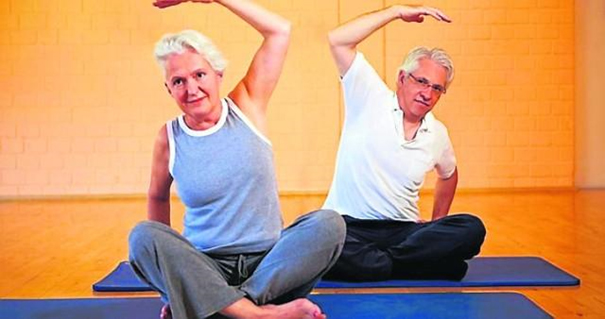Aging is a biological process that involves backward changes, and thus limiting the ability of cells and organs to self-repair. The decrease in the function of the nervous and endocrine systems gradually reduces metabolism, reducing muscle strength and the speed of conduction of nerve impulses. There are many methods used to delay aging, including geriatric rehabilitation and neurorehabilitation.
Geriatric rehabilitation
One of the roles that carers of the elderly play in relation to the people most dependent on the others help is to care for and work on improving the functioning of the elderly in their own home. The goal of geriatric rehabilitation is to improve mobility of the elderly and transform the aging process, which is often accompanied by disability and dependence on other people, into optimal aging, i.e. as long as possible to maintain the ability to function in many areas – physical, cognitive, emotional, social and spiritual despite occurring complaints.
Geriatric rehabilitation should be based on a comprehensive geriatric assessment – determining health, psychosocial problems and the functional capacity of an elderly person, and then choosing the most important goals.
Health-related activity of the elderly should mainly concern everyday activities, such as e.g. using kitchen appliances, cleaning, lifting something off the floor, exercises improving the ability to change position from sitting to standing, learning how to rise after a possible fall, improving walking. It should include walking at a slower and faster pace, changing direction, climbing up and down the step.
A very important role in the physical activity of the elderly is played by aerobic training programs, which are indicated for people who are unable to continue a given activity for a long period of time. Marching, nordic walking, hiking, running, cycling, swimming, aerobics are examples of trainings that improve cardiovascular and respiratory fitness, increase muscle endurance and general mobility.
As people grow old, the length of many muscles is shortened, which can lead to pain in certain positions, loss of function, and abnormal movement patterns, which is why stretching exercises are also recommended in this group.
Another important group for older people are exercises to improve balance and prevent falls. These exercises should affect static and dynamic balance, muscle strength and also include assessment and changes in the environment as well as assessment and correction of vision. An example is tai-chi exercises, which can be included in an exercise program for the elderly.
Rehabilitation programs for the elderly should be characterized by an individual approach to class participants. They can be carried out individually or in groups, the focus should be on simple and medium-difficult forms of physical activity. Physical exertion should preferably be made daily for 30 minutes or at least 3 times a week for 40 minutes. Exercises are also to be relaxing and enjoyable.
Neurorehabilitation
As people grow old, both the weight and volume of the brain decreases, and significant brain atrophy begins after the age of 60. Brain aging can be:
– optimal – without any symptoms of cognitive decline,
– physiological, with a slight impairment of cognitive functions,
– mild cognitive impairment – subjective and objective cognitive impairment with normal daily functioning,
– dementia – pronounced cognitive impairment affecting daily functioning.
The consequence of brain aging is, among others, deterioration of working memory and information processing speed.
Counteracting and / or delaying the effects of brain aging processes is possible because the brain has the ability to make plastic changes (neuroplasticity), thanks to which it can remodel connections between individual centers and rebuild lost functions. Neurorehabilitation uses technological achievements to restore, develop or improve the patient’s functioning in the area of:
- cognitive (e.g. memory, concentration, perceptiveness, attention),
- motor (e.g. motor coordination, correct reaction time, precision of movements).
Knowledge of brain neuroplasticity is used in cognitive therapies.
Interest in cognitive remediation techniques in elderly have increased with a growing understanding of the impact of cognitive impairment on loss of independence in day to day function. In recent years, several studies have assessed the efficacy of different cognitive interventions in the elderly and reported beneficial effects, even in advanced age, which could be maintained for a considerable period of time beyond training. The focus of interventions in these studies was memory and related functions. Multifaceted training that combines three relatively diverse strands of therapy: A form of counseling/behavior therapy to target psychosocial variables (self-efficacy beliefs, feelings of control, and optimism), CT to target cognitive functions and complimentary physical activity, appears to have some benefit in maintaining a higher level of cognitive function over time. Targeted cognitive interventions, especially memory training interventions, have been widely used. Memory training including stress management, health promotion, and memory self-efficacy support has been tested in older adults in retirement residences. Memory training for healthy older adults typically includes mnemonic strategies, concentration and attention, relaxation, personal insight, self-monitoring, motivation, feedback, and problem-solving, succeeded in improving memory performance. With memory training classes, elders improve their performance on cognitive tasks including perceptual discrimination, visual search, recognition, recall, and spatial perception
The review of research evaluating the effect of cognitively stimulating lifestyles on cognitive function of older adults suggests that overall research findings support positive effects of cognitive and physical activity, social engagement, and therapeutic nutrition in optimizing cognitive aging.
In summary, the available data suggest that cognitive remediation therapies have great promise for improving cognition and quality of life of elderly.
Reference List
Żak M., Rehabilitacja geriatryczna (2020). Medycyna Praktyczna dla pacjentów, Retrieved May 31, 2020 from
Sharma I., Srivastava J., Kumar A., SharmaR., Cognitive remediation therapy for older adults (2016). Journal Geriatric of Mental Heatlh, Retrieved May 31, 2020 from
Carr, JH, & Shepherd, RB. (2006). The changing face of neurological rehabilitation. Brazilian Journal of Physical Therapy, 10(2), 147-156. Retrieved May 31, 2020 from http://www.scielo.br/scielo.php?script=sci_arttext&pid=S1413-35552006000200003&lng=en&tlng=en. 10.1590/S1413-35552006000200003

